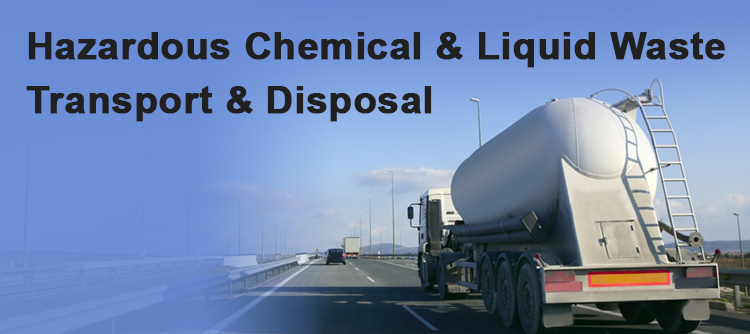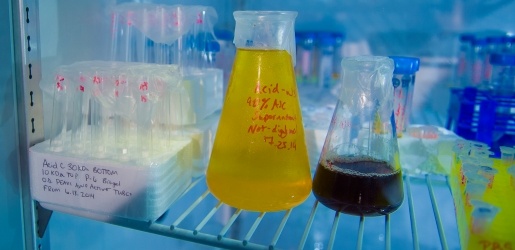Specialist Liquid Waste Removal Melbourne: Keeping Your Atmosphere Tidy
Specialist Liquid Waste Removal Melbourne: Keeping Your Atmosphere Tidy
Blog Article
How Liquid Waste Disposal Functions: A Detailed Review of Methods and Technologies Employed

Summary of Liquid Waste Types
The complexity of fluid waste kinds demands a complete understanding of their features and ramifications for disposal. Liquid waste can generally be classified right into several kinds, consisting of industrial, local, farming, and hazardous waste. Each classification shows distinctive homes, calling for details management methods to minimize environmental and health threats.
Industrial fluid waste stems from making processes and typically contains a series of pollutants, such as hefty steels, solvents, and organic compounds. Local fluid waste, largely comprising wastewater from houses and commercial establishments, includes raw material, nutrients, and microorganisms (industrial wastewater treatment). Agricultural liquid waste, consisting of runoff from farms, might include fertilizers, chemicals, and pet waste, posturing dangers to water quality and ecosystems
Unsafe fluid waste is identified by its toxicity, sensitivity, or potential to create harm. This classification includes compounds like acids, bases, and certain chemicals that require rigorous handling and disposal protocols. Understanding these diverse fluid waste types is vital for establishing effective disposal techniques and guaranteeing conformity with environmental guidelines. Correct category and characterization are vital for implementing ideal treatment techniques and decreasing the negative effect on public wellness and the environment.
Physical Treatment Techniques

Screening is the initial action, where bigger bits and debris are removed from the liquid waste making use of displays or grates. In sedimentation storage tanks, much heavier particles resolve at the base, forming a sludge layer, while the made clear liquid can be additional treated.
Filtering is an additional important technique that involves passing the fluid with porous materials, such as sand or membrane layers, to record smaller sized bits. This action enhances the high quality of the liquid, making it appropriate for succeeding treatment procedures.

Chemical Therapy Methods
Chemical therapy methods are essential for successfully handling liquid waste, especially in dealing with liquified and colloidal contaminants that physical approaches may not effectively remove. These methods utilize different chemical agents to counteract, precipitate, or change hazardous compounds right into less unsafe forms.
One usual method is coagulation and flocculation, where chemicals such as alum or ferric chloride are added to advertise the gathering of suspended bits. This procedure enhances sedimentation, enabling less complicated removal of the resulting sludge. Additionally, oxidation procedures, using agents like chlorine or ozone, are employed to break down complicated natural substances and pathogens, making the waste safer for discharge or more treatment.
Neutralization is another critical method, which readjusts the pH of acidic or alkaline waste streams to neutral degrees, preventing prospective damage to downstream systems and the atmosphere. In addition, advanced oxidation processes (AOPs) make use of mixes of oxidants and ultraviolet light to degrade consistent contaminants, accomplishing a greater level of therapy performance.
Organic Treatment Processes
Biological therapy procedures play a critical function in the administration of fluid waste by using microorganisms to decay raw material and reduce contaminant levels. index These procedures can be generally categorized right into cardio and anaerobic therapies, each utilizing specific microbial areas to achieve see this page efficient waste destruction.
Aerobic therapy includes the use of oxygen to help with the breakdown of organic products by microorganisms. This process is frequently carried out in activated sludge systems, where oygenation containers provide a favorable environment for microbial development, bring about the oxidation of natural toxins. The resultant biomass can be separated from treated effluent through sedimentation.
In comparison, anaerobic treatment occurs in the lack of oxygen, counting on different germs to break down raw material. This approach is especially advantageous for high-strength waste, as it produces biogas, a renewable resource source, while lowering sludge production. Technologies such as anaerobic digesters are regularly utilized in commercial and municipal applications.
Both cardiovascular and anaerobic organic therapies not only minimize the ecological influence of fluid waste but also promote resource recuperation, making them crucial components of sustainable waste administration methods. Their versatility, performance, and performance sustain their widespread application throughout various markets.
Arising Technologies in Disposal
Cutting-edge methods to liquid waste removal melbourne liquid garbage disposal are swiftly evolving, driven by advancements in modern technology and an enhancing emphasis on sustainability. Among these arising technologies, membrane bioreactors (MBRs) have gotten grip for their capacity to combine organic therapy with membrane layer purification, resulting in premium effluent that can be recycled in numerous applications. MBRs enable smaller footprints and much more efficient operations compared to standard systems.
An additional encouraging growth is making use of anaerobic food digestion incorporated with nutrient healing technologies, which not only treats fluid waste yet also generates biogas and recoups beneficial nutrients like nitrogen and phosphorus. This double advantage boosts source performance and minimizes ecological impact.
Additionally, advanced oxidation processes (AOPs) are being adopted for the degradation of complex natural toxins. These approaches make use of effective oxidants and drivers to break down impurities at the molecular degree, offering a very reliable option for difficult waste streams.
Furthermore, the combination of expert system and device learning in waste monitoring systems is maximizing operational efficiency and predictive maintenance, leading to lowered expenses and improved ecological compliance. These technologies reflect a substantial shift in the direction of even more sustainable and reliable liquid garbage disposal methods.
Conclusion
In verdict, efficient liquid garbage disposal necessitates a thorough understanding of different techniques and innovations. The combination of physical, chemical, and biological therapy methods makes sure the efficient administration of diverse waste kinds. Furthermore, the introduction of innovative innovations enhances treatment efficiency and promotes sustainability in waste management methods. By continually advancing these methods, it becomes possible to deal with the expanding challenges connected with fluid waste, inevitably contributing to environmental management and resource recuperation.
Fluid waste disposal is a vital facet of ecological management, requiring an extensive understanding of different methods and modern technologies tailored to different waste types. Liquid waste can broadly be categorized into numerous types, consisting of commercial, metropolitan, farming, and unsafe waste. Agricultural fluid waste, consisting of drainage from ranches, might have plant foods, chemicals, and animal waste, presenting dangers to water high quality and environments.
Numerous physical treatment techniques play an essential duty in handling liquid waste effectively - industrial wastewater treatment.In conclusion, reliable fluid waste disposal necessitates a comprehensive understanding of numerous strategies and innovations
Report this page